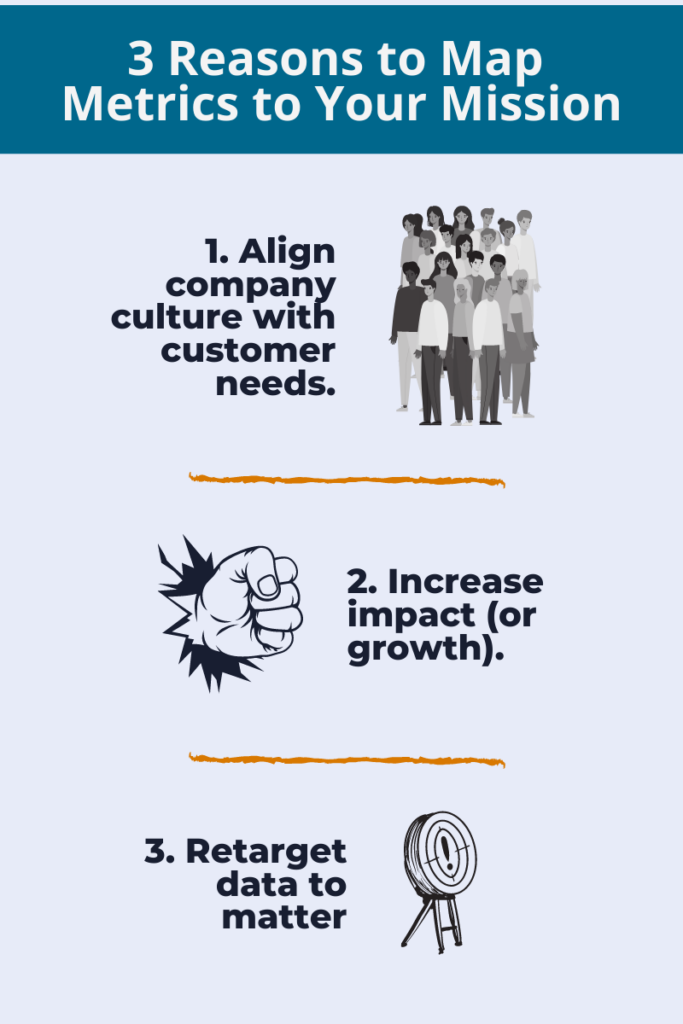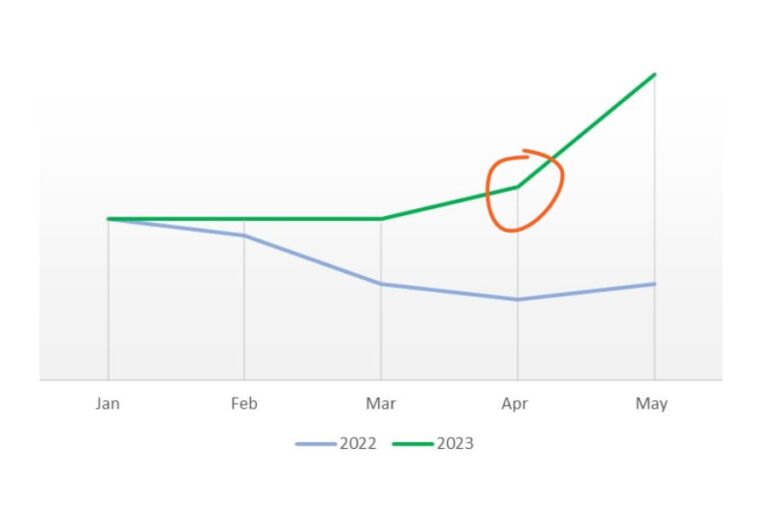Want to survive a recession? Start with your data.
Even the best value proposition doesn’t make your business recession or inflation-proof.
So how can a business double-down in times of economic uncertainty? Begin with your data and then focus on growth. Here are six ways to grow your business in an unpredictable economy.
How to Grow Your Business in an Unpredictable Economy
1). Map your metrics to your mission.
Businesses of all sizes should be using data to grow- and be intentional about it. It’s easy to overlook how to properly choose the right KPIS for growth. It’s vital to map your metrics to your mission. The whole company can drive change to meet your mission by bridging your daily operations with your financial goals. Begin with your strategic objectives and then break it down from a tactical point of view.
Choose a key expense category and identify an operational metric for it (variable expenses are usually the most important):
- Why is this expense critical for your success?
- How can an employee use this metric daily or weekly? Assign their name to this line item to build accountability, effectiveness and productivity.
For example, when you set your budget and/or forecast most employees cannot control the numbers but they can control operations that drive those numbers. If you’re a salesperson you can’t control whether the revenue doubles in the current year, but a salesperson can control how many cold calls they make each day. They can control the inputs that will result in the financial outcome you want to see. Do these touch-points have value to your key initiatives? If not, prioritize ones that do.
2). Make routine KPI monitoring easy with real-time reports.
Metrics related to your company health are also essential to growing your business. Examples of these KPIs include:
- Liquidity: check in with your current ratio regularly.
- Cash burn: know your break-even point and cash burn rate. If you don’t, be sure to ask your controller these questions.
- Churn: stay on top of your Customer Acquisition Cost (CAC) and Lifetime Value (LTV). A faster payback period means more profit cycles in a shorter amount of time and less capital to fund growth. Both of which are useful when you’re growing in an unpredictable economy.
Having instant insight into these metrics allows you to make operational decisions faster. When you want to grow your business in a volatile market, you should be checking in with these weekly, or even daily.
3). Identify and profile your best customers.
Finally, a special note on profiling your best customers. You can identify your ultimate customer profile by getting to know your best ones.
Analyzing your profit margins.
One of the common reasons we see a small business is losing money is because they are ignoring their unit economics. Analyze your profit margins on completed jobs to know if you’re actually making money from your customers. I’m guessing some customers are very profitable and some you actually lose money on. Armed with this information, you can make better choices in the future about which customers you should be focusing your marketing efforts on and which you should avoid. This analysis becomes even more important as business owners prepare for inflation.
Segmenting
Calculating your CAC and LTV normally gives you an average for your customers across the company. But the reality is you will have a chunk of customers that have a really long lifetime and then there will be a number that churn really quickly. Plot out those customers that have been with you the longest; are there similarities you can identify in order to profile them? That customer profile is where you should invest your time (or money). They are your most valuable customers.
Cohort Analysis
The biggest mistakes entrepreneurs make with their analytics is being satisfied with averages; ignoring the drill-downs and forgetting about cohort analysis. Cohort Analysis looks at groups of customers over time. It’s behavioral analysis to examine slices of customers individually and the metrics related to them- churn, CAC, and revenue for example.
Metrics narrowed down from a cohort of customers tells you sooner if you’re making the right kind of progress. Lumping all your customers together is giving you an average which, in this case, tells you nothing.
For example, startups aim to always make their service or product better with the hope that newer customers will stick around longer than customers that fall under the legacy category. The average churn may look great but if they drill-down and all their newest customers have churned within the last three months they should be asking what they’re doing wrong and fix it right away.
Engage and strategize to double-down and grow.
4). Deepen engagement, cross-sell and upsell.
It costs a business significantly more to acquire a new customer than to sell to an existing one. When you’re unsure of the current market, focus inward on your existing customer-base and how you can expand that in order to grow your business in an unpredictable economy.
- Get to know your current customer-base: survey, increase touch points, collect customer demographics (i.e., run some cohort analysis).
- Deepen engagement with your current customer base: build a referral program. This might yield new testimonials or open new channels to market your product or service.
- Offer more services to existing customers. Fix more of your customers’ problems or offer new products to meet their shift in need.
- Surprise and delight and over-deliver.
Prevent lost revenue by reengaging.
Here’s how one of our clients prevented lost revenue: they learned they were about to lose a customer to a competing company but by initiating a direct conversation with a decision maker they not only prevented the client from leaving, but reengaged with them and upsold the customer to more services. By both over-delivering and upselling our client essentially doubled the profit they were about to lose.
5). Fine-tune your value proposition.
Put your value proposition into words that speak to your target customer-base. Focus on what problems you solve instead of simply selling your product. Use your best-performing customer cohort and write your value proposition for them.
6). Look for strategic partnerships.
Establish strategic partnerships- ideally ones that are mutually beneficial- to build rapport and word-of-mouth marketing. I have a passion for helping entrepreneurs succeed so a partnership with the Junto Institute made perfect sense for our Cloud CFO team. We sponsor the institute and provide mentorship hours and in return we receive unique opportunities to promote content and our services to the incubator’s network.
Economic uncertainty doesn’t have to be the end-game. Use these six tips to grow your business and prepare your business for recession better than most.
Our value proposition? Our outsourced CFO services help entrepreneurs with high-growth companies scale profitably. We offer CFO-level strategy with a back-end team that isn’t afraid to roll up their sleeves for the day-to-day needs of your operation. Get in touch to book your free consultation.






